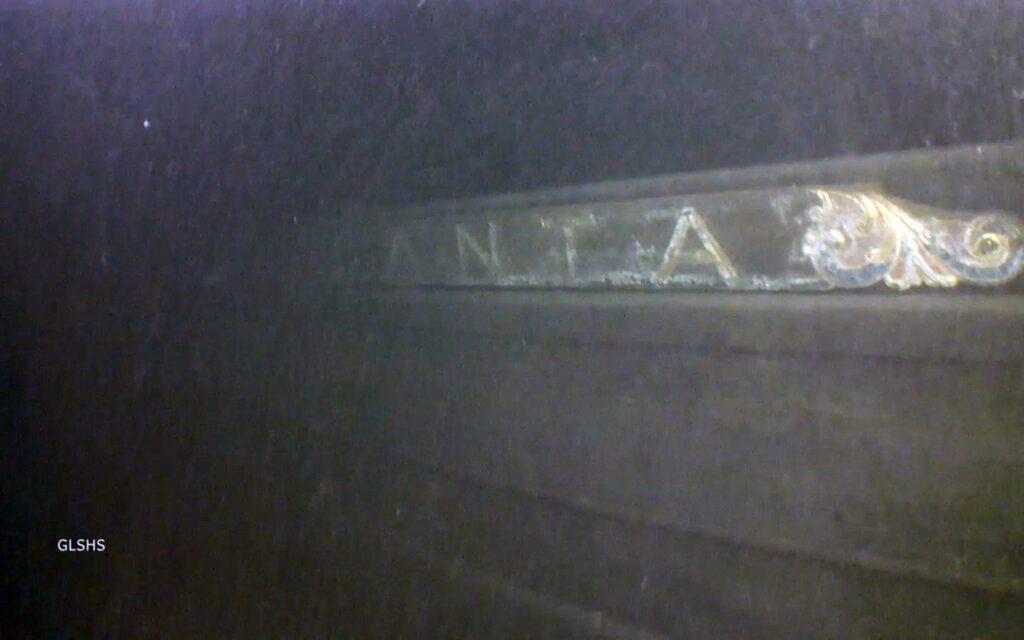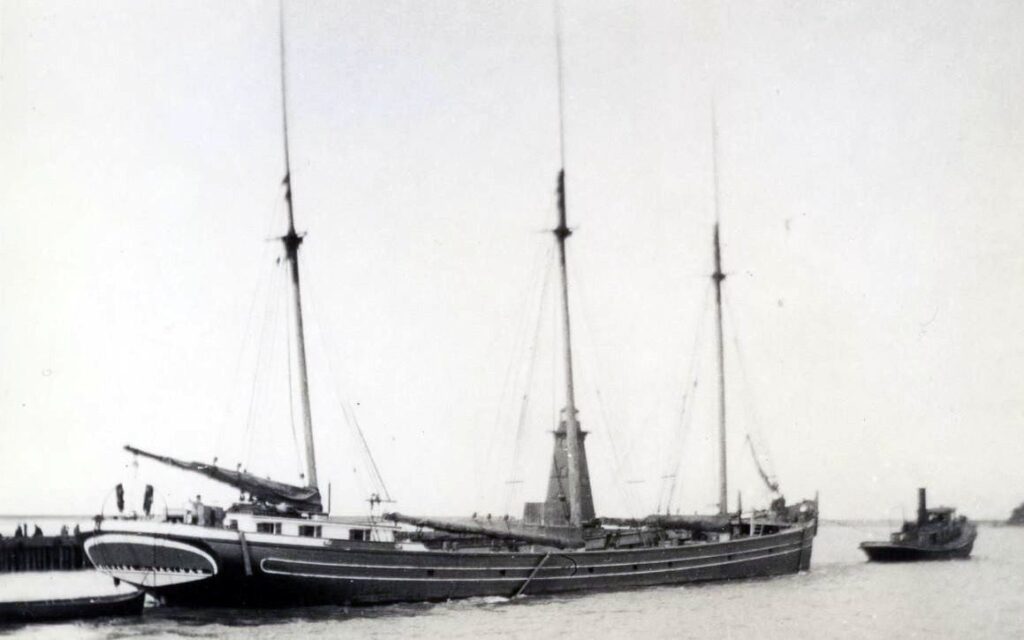Sir Ernest Shackleton Endurance ní hí an t-aon long amháin a fuarthas ag doimhneacht fhuar agus a aithníodh trí ainmchlár dea-chaomhnaithe le déanaí. Tá raic atá suite i fuar Lake Superior i Michigan, SAM, díreach tar éis a aithint mar bháirse scúinse ó dheireadh an 19ú haois. Atlanta.
Bhí lastas guail á iompar ag an soitheach 52m agus seolta á ísliú faoi bharrach ag an ngaltán Wilhelm ar 4 Bealtaine, 1891 nuair a chuaigh an líne tarraingthe i léig mar gheall ar choinníollacha gála.
Freisin léamh: Ancaire & cófra aimsithe ag suíomh longbhriseadh na Síne
Gan seolta an Atlanta, a bhí tógtha ach an bhliain roimhe sin, bhí ag an trócaire na stoirme. Bhain na trí chrann go léir amach ag a mbunáit, agus thréig an criú de sheachtar, lena n-áirítear cócaire baineann, long.
Tar éis roinnt uaireanta an chloig shroich a mbád tarrthála teach solais Crisp Point agus stáisiún tarrthála, ach d’iompaigh sé ina scoradáin throma agus iad ag iarraidh teacht i dtír, agus níorbh fhéidir ach beirt fhear a shábháil ó na tonnta.
An Cumann Staire Longbhriste na Lochanna Mór (GLSHS) atá suite ar an longbhriseadh 56km amach ó chladach oirdheisceart Superior ag doimhneacht timpeall 200m. Bhí roinnt marcanna aimsithe aige agus é ag mapáil níos mó ná 2,500 míle den loch an samhradh seo caite ag baint úsáide as sonóra taobhscanta Marine Sonic Technology, agus chuimsigh siad seo an méid píosaí scannáin ó tumadóireacht ROV atá deimhnithe anois. Atlanta.



An físeán léirigh sé go raibh na trí chrann go deimhin tar éis briseadh amach go sruthlaithe leis an deic agus nach raibh siad le feiceáil i ngar don longbhriseadh. Bhí gnéithe den long, lena n-áirítear a roth leath-adhlactha, leithreas, caidéal agus an t-ainmchlár fós le feiceáil go soiléir.
“Is annamh a aimsímid longbhriseadh a fhógraíonn go soiléir cad é atá ann, agus ainmchlár Atlanta seasann amach go mór,” a dúirt stiúrthóir feidhmiúcháin GLSHS Bruce Lynn. Scríobhadh an t-ainm in ór, le scrollbharra maisiúil. “Tá sé fíor-ornáideach, agus fós álainn tar éis 130 bliain ag bun Loch Superior.”



“Thugamar amach naoi longbhriseadh an samhradh seo caite - níl gach ceann acu eisithe go fóill ach tá 19 sprioc againn freisin le dul ar ais agus féachaint orthu a d’fhéadfadh a bheith ina longbhriseadh,” a dúirt stiúrthóir oibríochtaí mara GLSHS, Darryl Ertel. Divernet
“Tá siad seo ar fad taobh amuigh de theorainneacha tumadóireacht spóirt, fiú tumadóireacht theicniúil.” Tá Ertel ar cheann de theagascóirí teicniúla an chumainn, a mhúineann tumadóireacht análaithe gáis mheasctha go 90m.
“I 2007 agus 2008 fuaireamar 14 longbhriseadh i níos lú ná 8m uisce ag Whitefish Point, agus chuireamar dhá DVD ar fáil fúthu,” a dúirt sé, ag moladh d’aon tumadóir scúba ar spéis leis raic intumtha Loch Superior a fhiosrú, go bhfuil 30 liostaithe ar an Iasc Geal. Pointe Caomhnaigh Faoi Uisce láithreán gréasáin. Tá Pointe an Éisc Gheal beagán os cionn 20km ón bPointe Briosc.
D’fhéadfadh longbhriseadh a bheith caomhnaithe go maith ag uiscí fuara an locha, ach cuireann na huiscí sin beatha na ndaoine nach bhfuil trua go leor le titim isteach iontu i mbaol freisin.
Go gairid tar éis don GLSHS a fhógairt go bhfuarthas amach an Atlanta, tháinig baill a bhí ag cuardach taifid Sheirbhís Tarrthála Saoil na SA ar litir a scríobhadh dhá lá tar éis an tóin poill. Shínigh Eli Wait, duine den bheirt mairnéalach a tháinig slán, é agus síniú an fhir eile, John Pickel, i gceangal leis.

Tuairiscíonn fan go bhfuil coimeádaí an tí solais, an Captaen Small ag an bPointe Briosc, á shábháil “ag pointe báis”. Gan slaghdán, “i gceann 10 soicind eile bheadh mé caillte, mar bhí an undertow ag tabhairt amach mé nuair a rith an maor amach isteach sa loch agus tharraing sé i dtír mé.
“Níorbh fhéidir iad siúd a cailleadh a shábháil; bhí siad chomh báite leis an bhfuacht nárbh fhéidir leo fanacht go dtí go dtiocfadh le lucht tarrthála teacht chucu,” a scríobh Wait.
“Ní féidir liom mo bhuíochas a chur in iúl le peann as an gcineáltas a fuaireamar ón gcaptaen agus ón bhfoireann, mar is féidir linn a rá go sábháilte go bhfuil muid faoi chomaoin acu as ár saol.”

